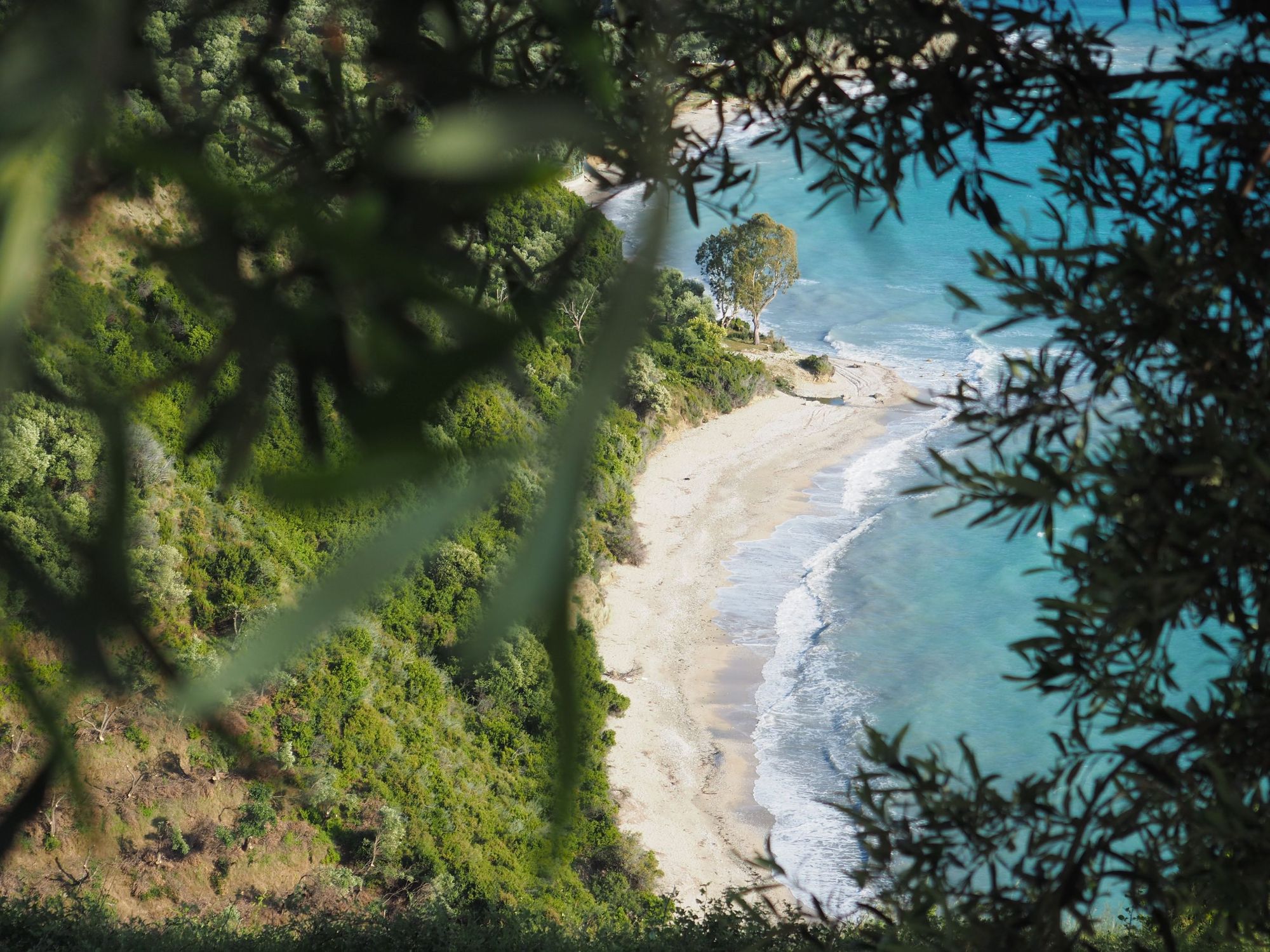In summer, the beaches of Livadh and Dhërmi crowd with tourists topping up tan lines on tightly-packed sun loungers. Both patches of sand sit on the Albanian Riviera, 12.5 miles (20km) apart; backdropped by high mountains dotted with olive groves, curving around the southern coastline. Their idyllic white sands stare out on the Ionian Sea, across to Corfu and the heel of Italy.

In the high season, nightlife rules - and almost all 5km of Dhërmi beach is taken up by tourists, but in the low season, the place empties. The sand is just as white, but a tranquil bliss replaces the bustle. The deep blue sea still glimmers under the Mediterranean sun, and the white, stacked houses on the hillside still look out over the beauty - but without the sun loungers obscuring the view. There’s an extra serenity to the old shepherd’s paths, and an extra secrecy to the coves.
You only see the flashy, glitzy part of a beach resort in summer. Here you get to see what really goes on without the crowds...
“The area is heavily visited in July and August, but it’s almost dead in spring and autumn,” says Ricardo Fahrig, a destination development expert and co-founder of tour operator Zbulo! Discover Albania. Born and raised in Germany, Fahrig has now been working and living in Tirana, the Albanian capital, for over a decade.
“There was so much untapped potential here, and so much to do in a destination which was so little known. I lost my heart here,” he says.
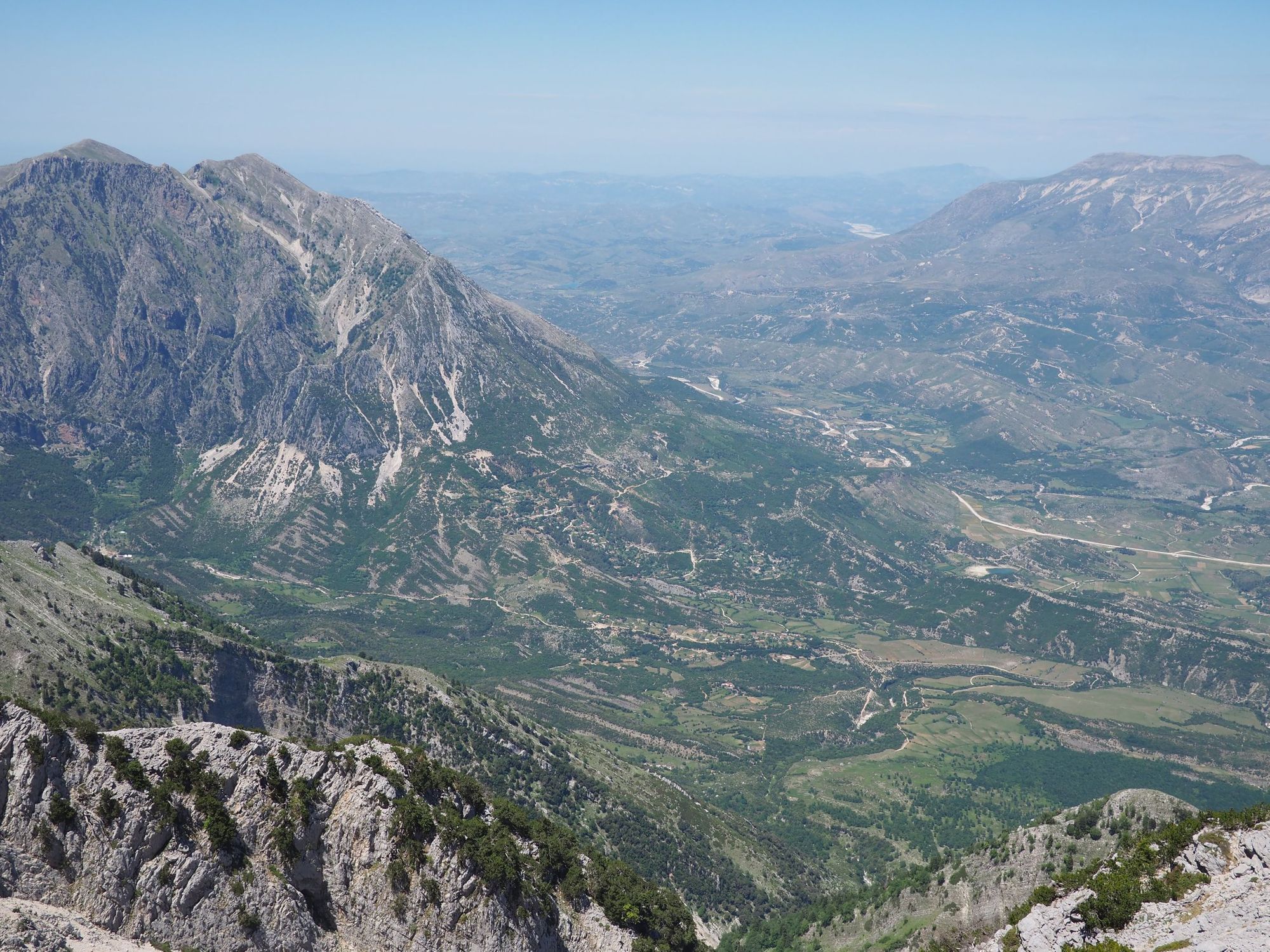
Albania arrived late to the tourism map. While neighbouring Greece transformed into a hotspot for international travellers after World War II - with a startling increase in tourist arrivals of 1,098% by the 1960s - Albania only opened up to the world in the 90s, post-communism. There was no mass development in the country during this time, which is partly why so many of the country's natural landscapes, like the Vjosa river, have stayed pristine and are now protected in national parks. But it also deprived the country of economic growth.
“Albania was isolated after WW2 for almost 45 years,” Ricardo says.
You have the area more to yourself. There are less waiting times and lower pricing. The locals are more relaxed because they are under less pressure, and so you get a much more authentic insight...
In the past decade, that's changed - and the country has seen a huge boom in tourism. The 7.5m visitors Albania received in 2022 are still far behind the 30m of Greece - and while tourism accounts for a massive 25% of GDP in Montenegro, that figure is still just 8% for Albania - but what’s notable about Albania is how quickly tourism is growing. The country is set to welcome over 10m for 2023.
“That’s the fastest growth post-pandemic in Europe,” Fahrig says. “We’ve seen growth in guest numbers by more than 50% this year alone - and that isn’t coming from low numbers. It's been particularly rapid, rocket growth, and now there’s actually a struggle with some overtourism problems in certain spots.
“We have small mountain communities now that had a population of around 500 a few years ago but now they receive 100,000 visitors a year. That impacts the water, the rainwater, the electricity, trash, road infrastructure - all of that are all being challenged by the current situation.
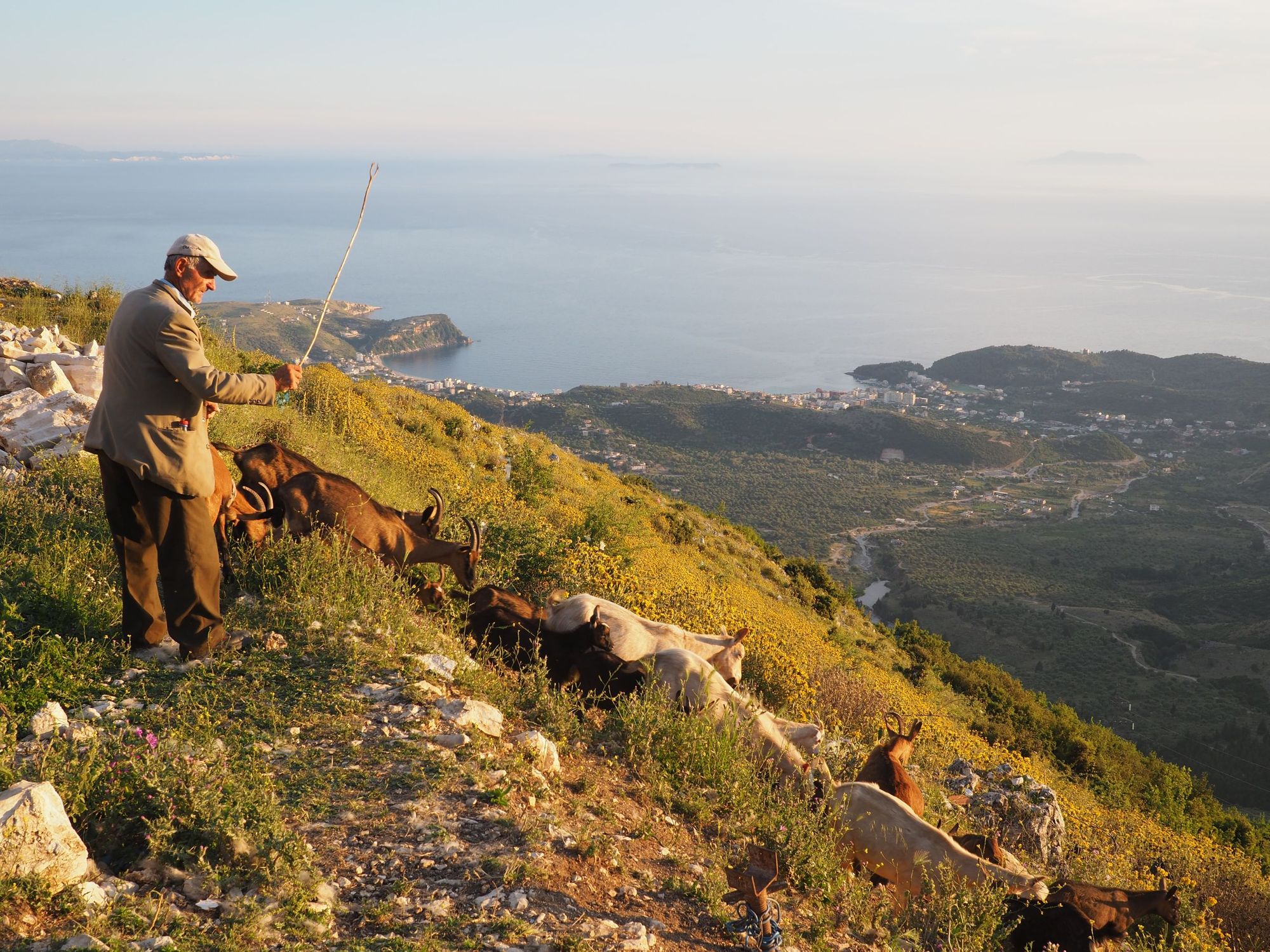
“Most locals wouldn’t see it as a problem right now. Albania is economically-speaking the poorest country in Europe. The average salary is less than €600 a month - and the income stream from tourism is so great. But for many rural communities, it was a big surprise that guests started coming at all, out of nowhere with all this income, and a lot still have this mindset that it could all just vanish again tomorrow - so let’s make the most of it while we can. But what we need is sustainable growth. This isn’t something we just want to do this year, it’s something that your kids and the next generations could benefit from too."
The benefits of off-season travel
Overtourism can be caused by a myriad of reasons - from low-cost airlines and docking cruises to social media saturation or destination exposure via television - but prime amongst the overtourism issues in Albania is the fact that currently, most tourism to Albania is centred on the same places, at the same time.
“20% of the places attract 80% of the visitors,” says Ricardo, and from June to August, tourist footfall in Albania is five times heavier than it is during the rest of the year. “We are a Mediterranean country, so most people associate it with summer. There is a preconception, so people tend to visit mainly in July and August. They are concentrated heavily in these two months. Before June and after September, there is comparatively little going on.”
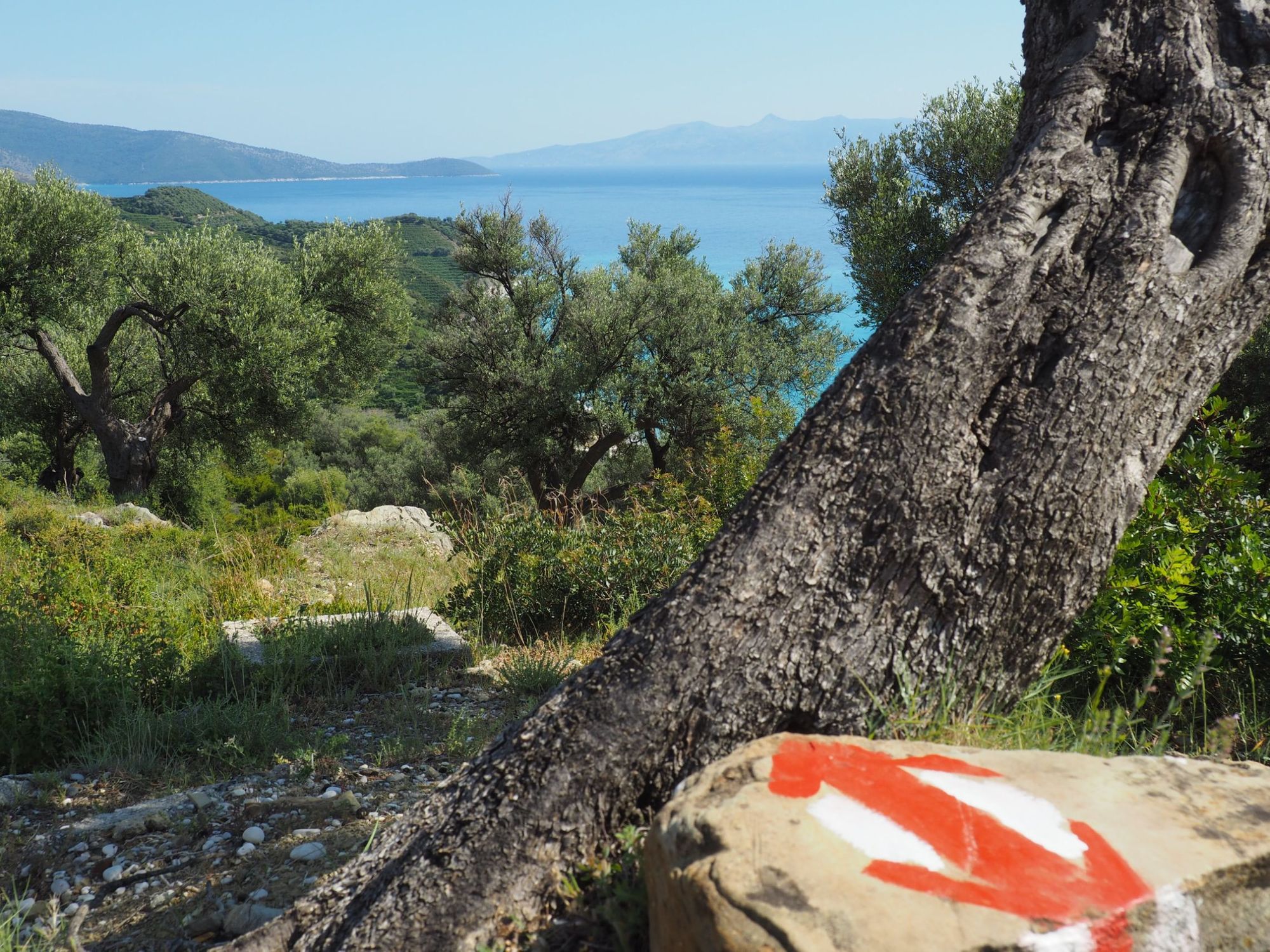
Part of Fahrig’s work involves developing new trails to distribute all of this new tourism around the country. One of the first trails he created was the acclaimed Peaks of the Balkans route, which itself has now reached capacity. “It was aimed at connecting the most attractive mountain regions of Albania, Kosovo and Montenegro into a circular walk, to bring communities that didn’t see any visitors into the tourism network, and ease pressure on the other hotspots,” he says.
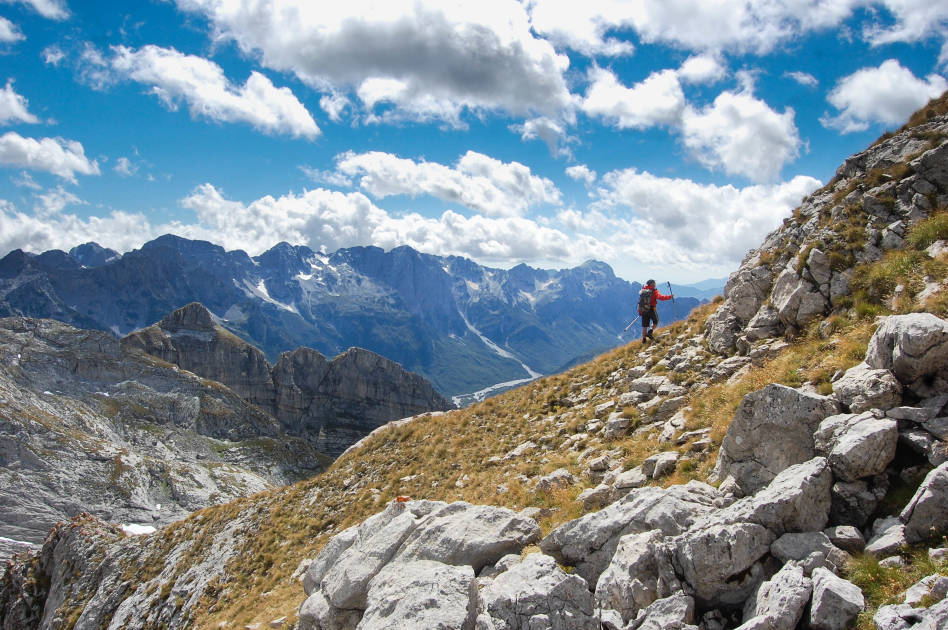
This trail is not reachable at all during winter though, owing to the snow. They shut from late-mid October to early May," says Ricardo. "Most of them are in hibernation, so for half of the year there is no business or work at all. It’s a big contrast for rural tourist communities that go from zero to one hundred."
Fahrig's latest trail is being launched to specifically to try and stretch the season in the south of Albania - to provide an income for locals who live in areas like Livadh and Dhërmi, frequented in the summer, and silent in the winter.
Travelling in the off-season, in Spring and Autumn, you really get to know the locals better than you might in summer - and support people who live on site year round...
“In the area everything shuts down and it's completely empty; we're hoping to address that by having these alternative experiences there,” Ricardo says.
The new, adventurous route takes visitors along the spine of the lush, green Karaburun Peninsula and up to the peak of the 1,446m Mt. Gjipali. It explores olive groves and hidden ocean coves ideal for wild swimming, and passes through relaxed coastal villages, which are all the more so for the lack of tourists.
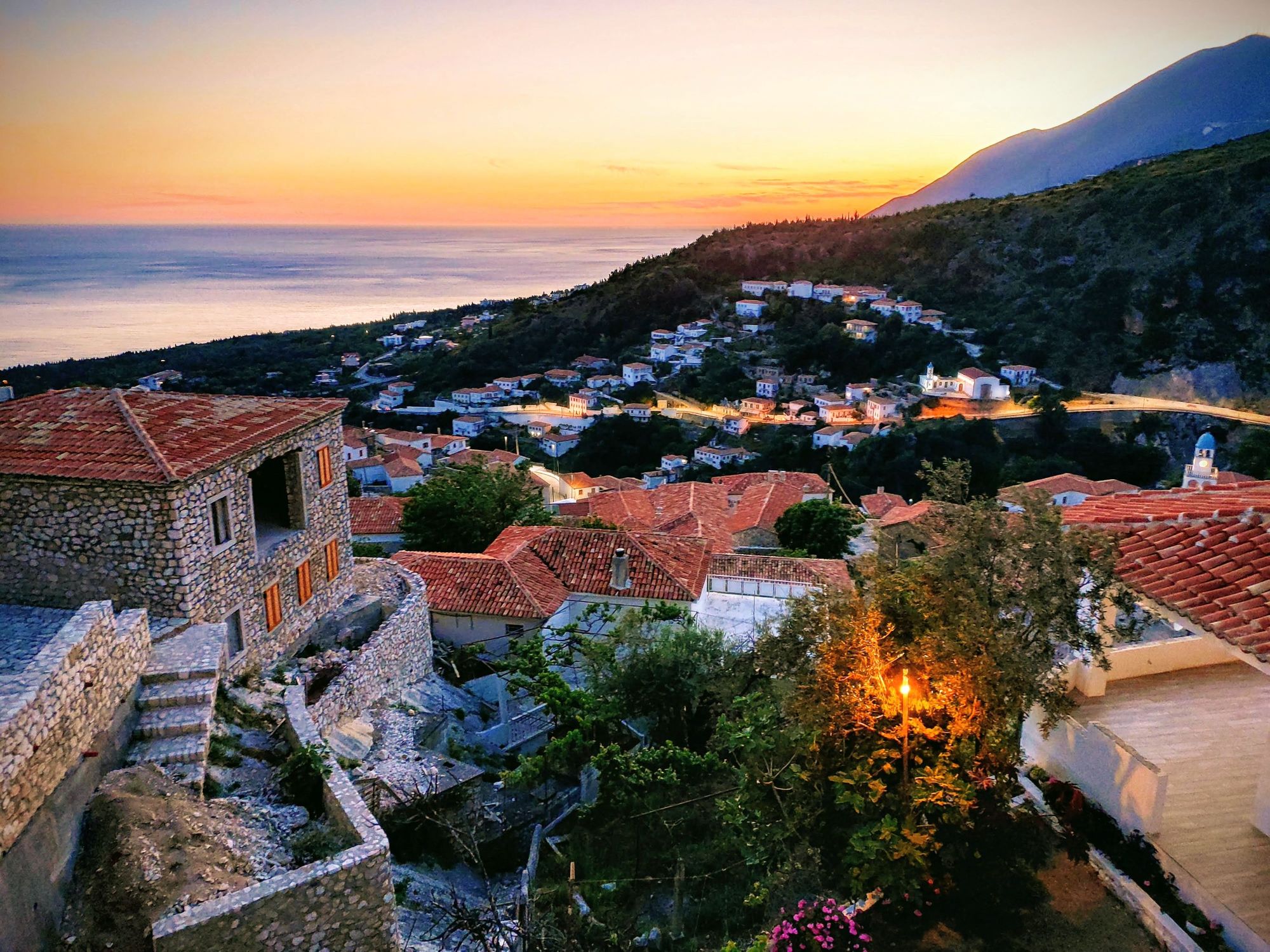
“At the risk of stating the obvious, if you come during the off-season there are a lot fewer visitors,” says Fahrig. “So you have the area more to yourself. There are less waiting times and lower pricing. The locals are more relaxed because they are under less pressure, and so you get a much more authentic insight - because you aren't just going to be meeting seasonal visitors, you're going to meet more locals who actually live in these places year-round."
Visitors still get the beauty of the views, while locals get work in quiet months. “We’ll avoid the hotter, busier summer months, and also extend the seasonality - supporting leaders and local suppliers beyond just the summer,” says Marta Marinelli, Adventure Expansion Manager at Much Better Adventures.
Naturally, you may have to deal with less stable weather conditions, but particularly in the shoulder seasons - which in Albania are in early May and late September - weather on the southern coast is generally still warm (around 26°C) during the day and cooler at night.
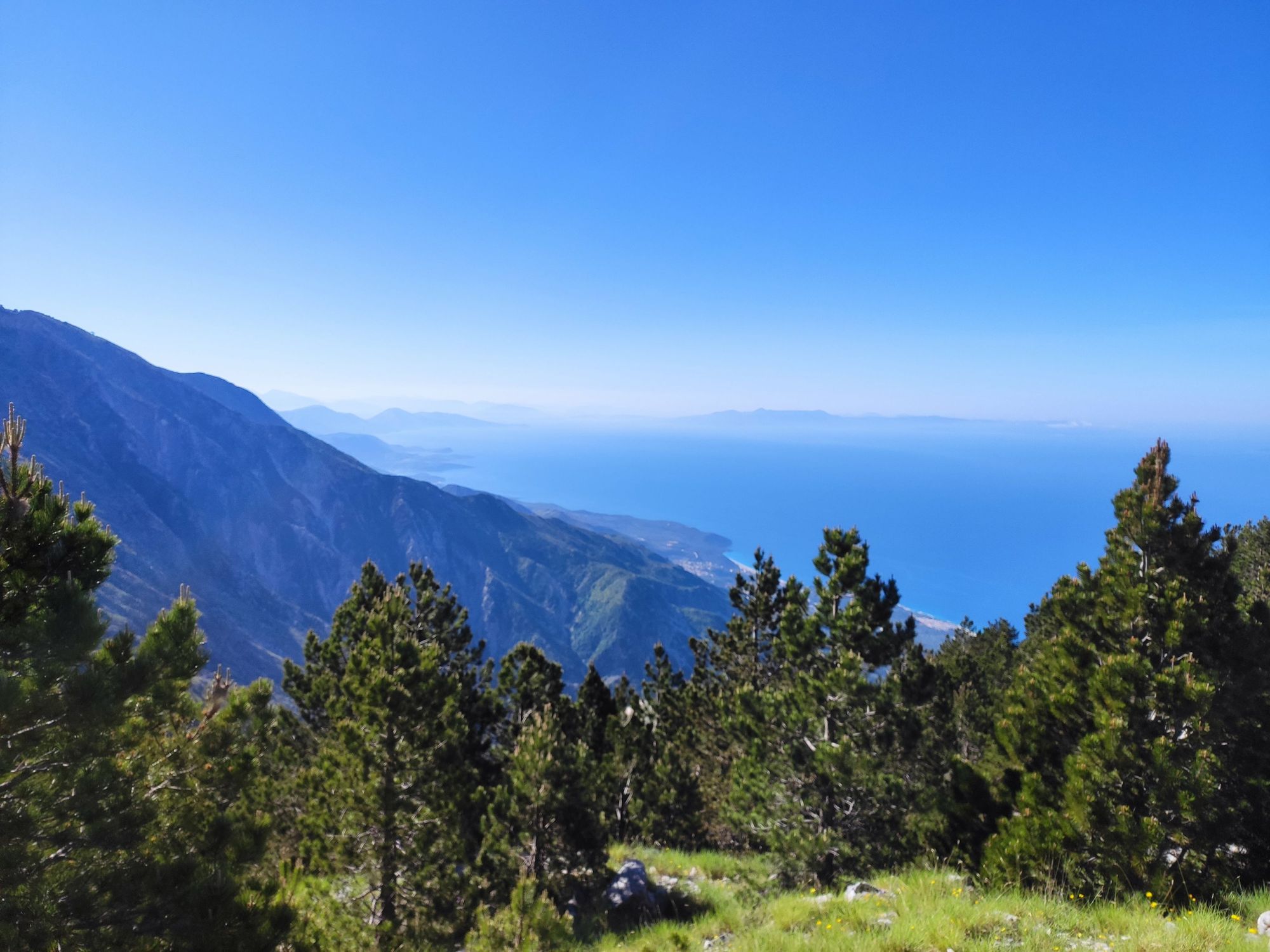
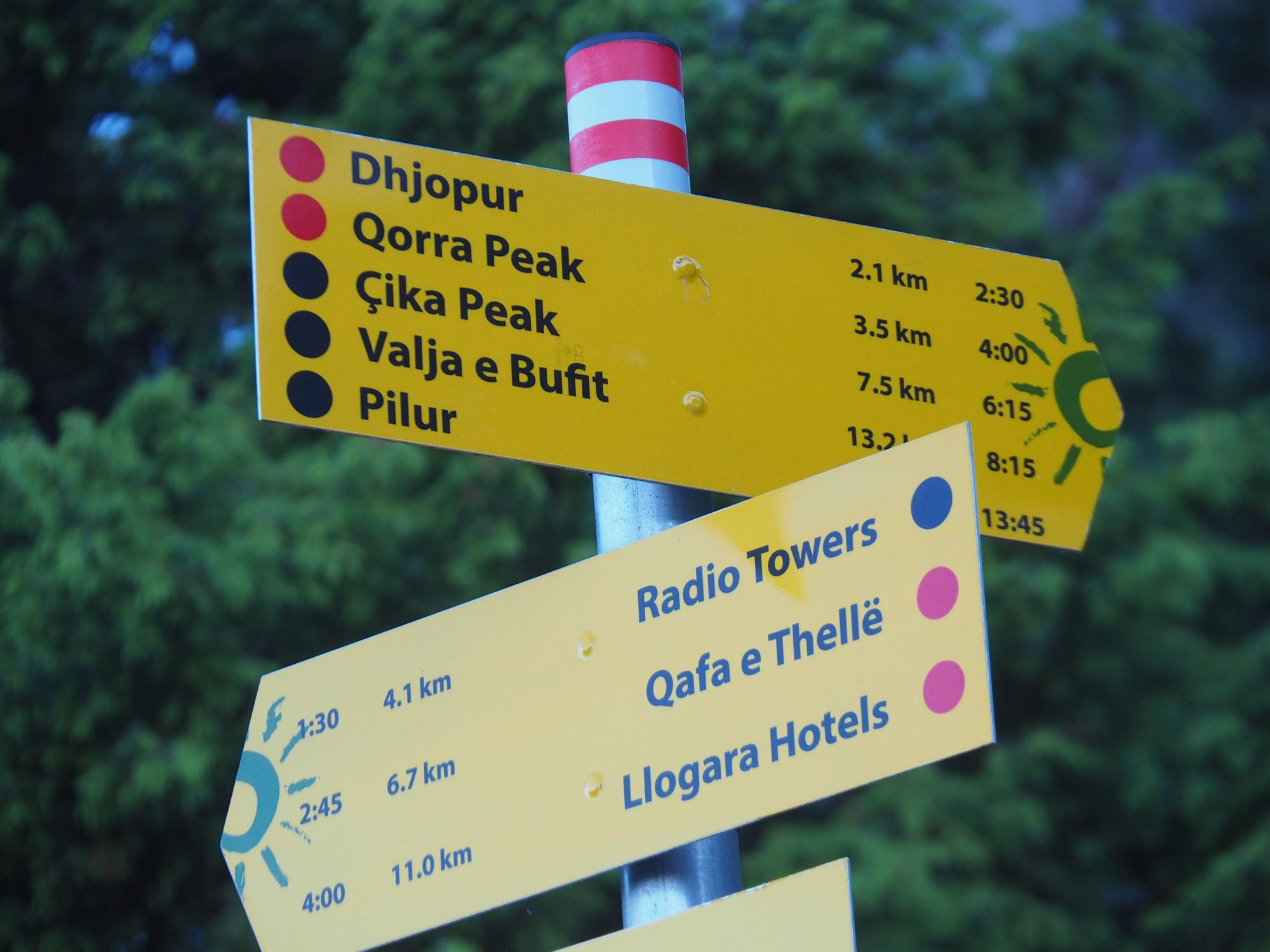
The views, left, and the waymarking, right, on the Albanian Coastal Trail in the south of the country. Photos: Ricardo Fahrig
In some destinations, certain activities will also be season-specific. For example, you won’t be able to complete the Peaks of the Balkans trail in winter (at least not without some serious mountaineering experience and equipment), because it’ll be hidden under three metres of snow.
One key cause of summer overtourism is that associations often driven through marketing campaigns give us a preconception that certain locations can only be visited at certain times of year. While sometimes true, this prevents many from travelling at times when the weather is perfectly enjoyable; and a byproduct of this is overcrowding in the summer - and subsequent issues for locals, both with seasonality of income, and with a rise in the cost of living prices, year-round.

"You Have to Support It The Whole Year"
Albania remains a country where many still emigrate for work. A 2021 poll stated that a massive 50% of adults in the country wanted to leave the country and move abroad - most commonly due to low wages and a lack of opportunities.
Tourism can be an olive branch to those who feel like they are being pushed out of their country, but only if the opportunities created for locals are sustainable year-round. This is a tale relevant not just to Albania, but to global tourism.
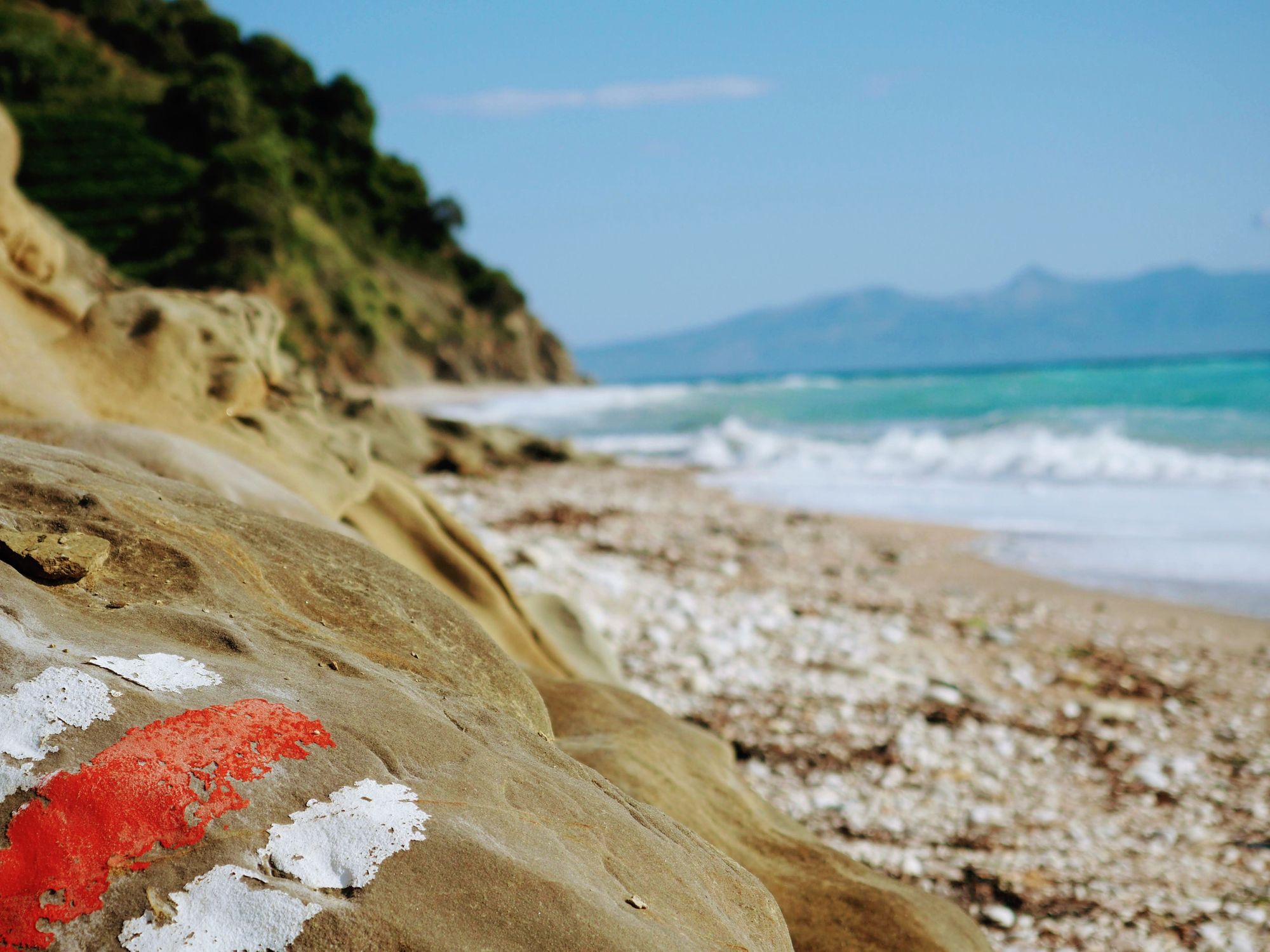
Jess Brooks, who guides low-season travel tours in Mongolia, told me: “If you're going to sell a country or be dedicated to that country you have to support it the whole year round rather than just when you make your maximum profit, really.”
Ayman Abd Alkareem, co-founder of the Jordan Trail, a 675km route through the Middle Eastern country, said: “Tourism was promoted as seasonal in Jordan for 10 years, but it really has to be stretched throughout the year. You can’t give people business in the high season, then abandon them during the low season.”
You have to support it the whole year round rather than just when you make your maximum profit...
And Umberto Esposito, a guide of wildlife-tracking trips in the Abruzzo Mountains in Italy, said: “You can’t run an activity for only two months of the year. It’s really important for local communities to be able to look beyond that. If you talk about tourism, almost everyone benefits - from the hotels and restaurants to the farmers and local producers. In the end, they’re all involved.”
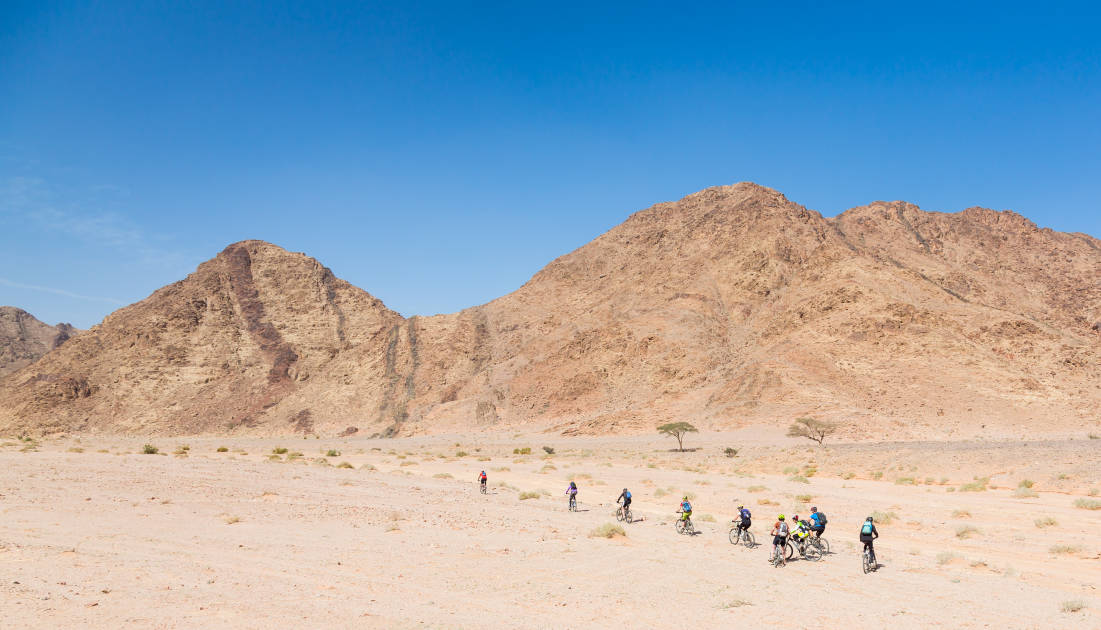
The Albanian Riviera still gleams in the shoulder seasons.
“You have a backdrop of 2000m high coastal mountains, and in between olive groves,” says Ricardo. “You can visit ghost towns, which were left by people moving to the resorts, and it feels like you’re moving back in time. You stay at small, family-run guesthouses with a local touch and by travelling in the off-season, in spring and autumn, you really get to know the locals better than you might in summer - and support people who live on site year round. They're real locals. You only see the flashy, glitzy part of a beach resort in summer. Here you get to see what really goes on without the crowds.”
Inspired? Check out our adventure holidays in Albania now!

